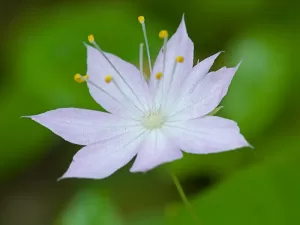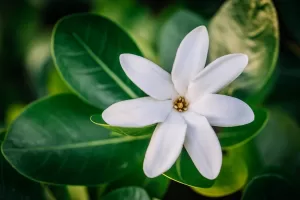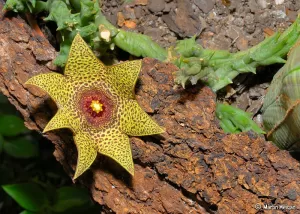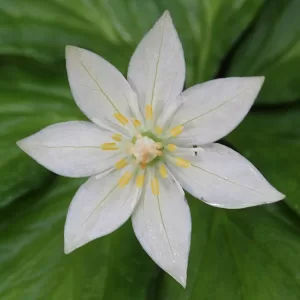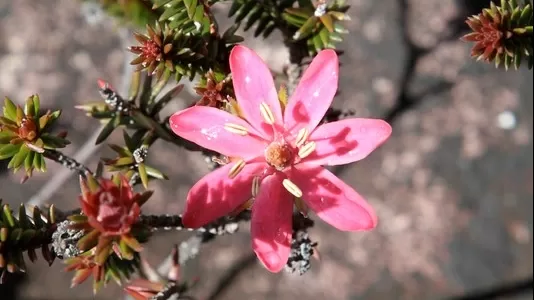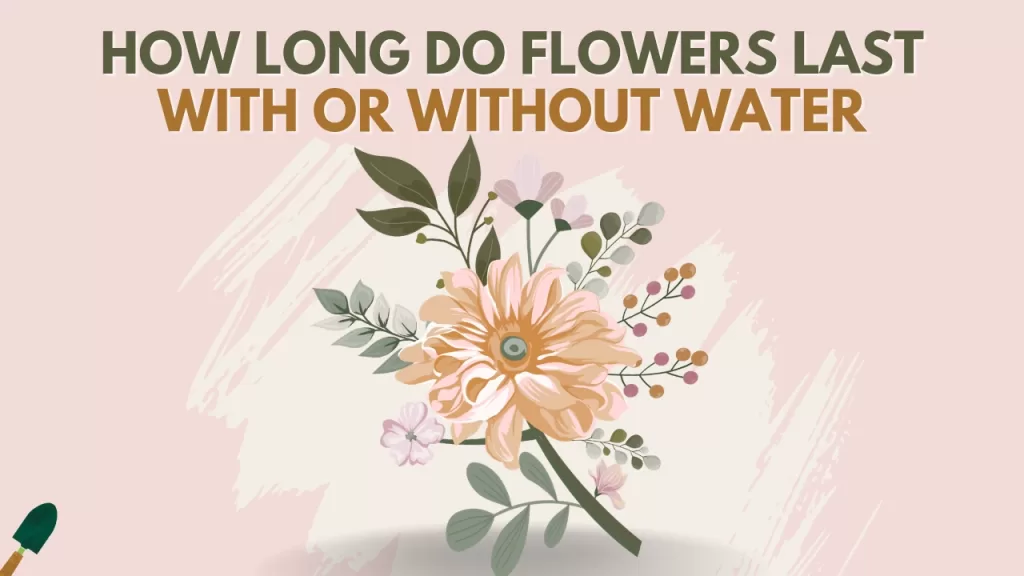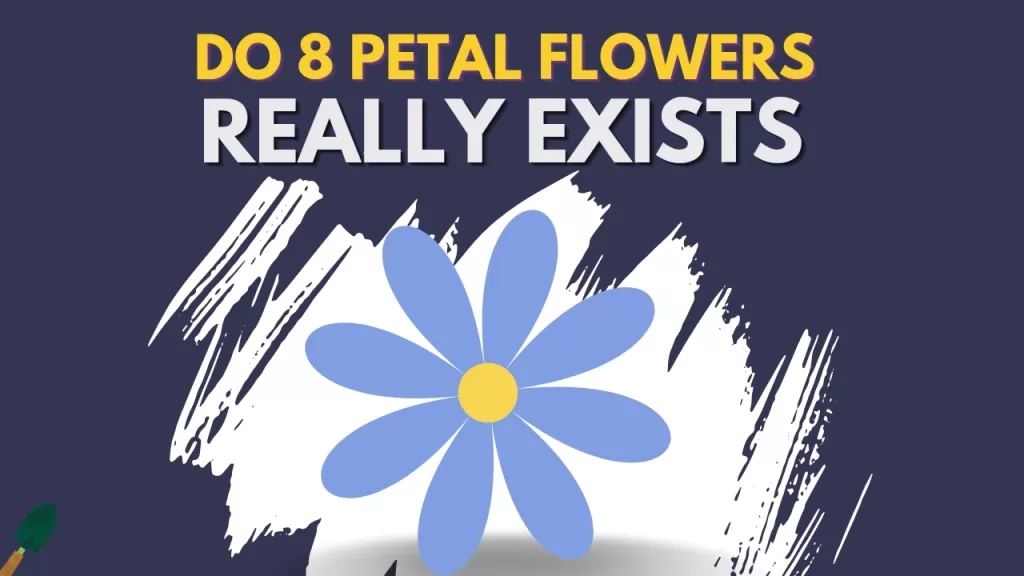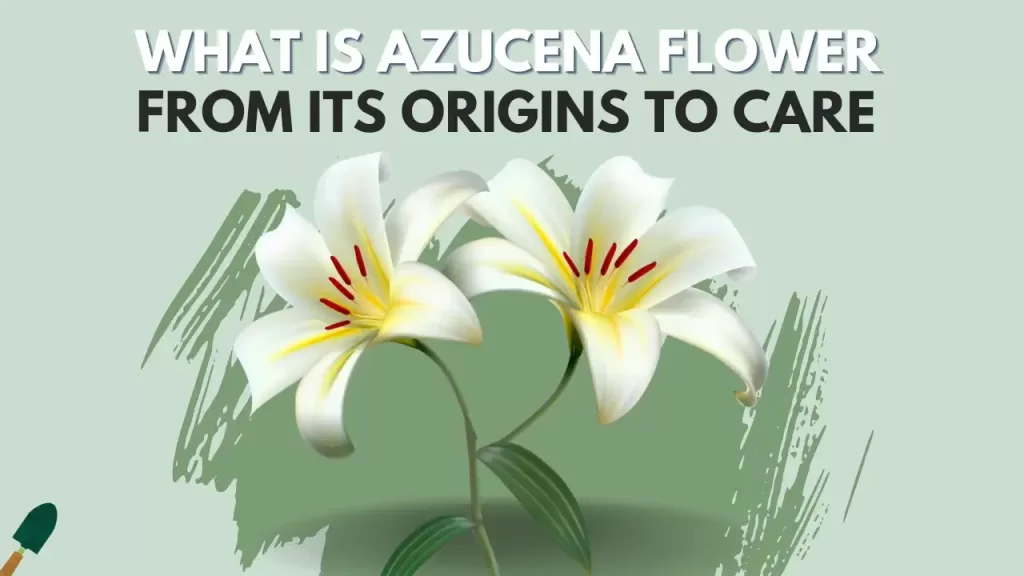Are you looking for something unique and eye-catching to add to your garden? Look no further than flowers with seven petals. While many flowers have the more common number of petals such as five or six petals flowers are a rare and beautiful sight to behold.
In this article, we’ll introduce you to some of the most stunning and fascinating flowers with seven petals. From the delicate starflower to the exotic orbee verrucosa hybrid flower, we’ll explore their physical characteristics, how to care for them, and any cultural or symbolic significance they may hold.
But before we dive into these seven petal wonders, let’s take a moment to discuss petals and what makes them so fascinating.
Importance of Petals In Flowers
Petal is one of the most recognizable parts of a flower, and they serve several important functions. Here are a few interesting facts about petals:
- Petals are usually brightly colored to attract pollinators such as bees and butterflies.
- Some flowers have fused petals, which makes them more resilient to harsh weather conditions.
- The number of petals in a flower can vary widely, from one to hundreds.
- Petals can be symmetrical or asymmetrical, and they can have a variety of shapes and textures.
So, what makes a flower have seven petals? While there is no single answer to this question, it’s believed that the number of petals in a flower is influenced by a variety of genetic and environmental factors. Some flowers may have evolved to have seven petals because it offers a competitive advantage in attracting pollinators or reproducing successfully.
Whatever the reason, there’s no denying that flowers with seven petals are a sight to behold. Let’s take a closer look at some of the most beautiful and unique seven-petaled flowers out there.
List of All 7 Petal Flowers
Flowers that have 7 petals are:
- Starflower
- Tiare flower
- Orbee verrucose hybrid flower
- Stapelia kougabergensis
- Kinugasa japonica
- Ledothamnus flower
Let’s look at each flower one by one.
Starflower
The Starflower, also known as Trientalis Borealis, is a delicate wildflower that has 7 petals. the flower is native to North America and parts of Eurasia. Here are some interesting facts about this stunning seven-petaled flower:
Appearance
- The Starflower gets its name from its unique star-shaped petals
- The petals are usually white or pale pink in color.
- The plant itself is small, typically only growing to be 3-6 inches tall, with a single flower per stem.
Habitat
- The Starflower is found in a variety of habitats, including moist woods, bogs, and meadows.
- It prefers acidic soils and can often be found growing alongside other wildflowers such as Trillium and Bloodroot.
Blooming Season
Starflowers typically bloom in late spring or early summer, depending on the location and climate.
Cultural Significance
The Starflower has been used for medicinal purposes by Native American tribes, who brewed it into a tea to treat a variety of ailments such as headaches and stomach aches.
Growing Tips
If you’re interested in growing Starflowers in your garden, they prefer partial shade and moist, acidic soil. They can be propagated from seeds or by dividing established plants in the fall.
Overall, the Starflower is a beautiful and unique addition to any garden or natural setting. Its delicate appearance and cultural significance make it a favorite of many wildflower enthusiasts.
Tiare Flower
The Tiare flower, also known as Gardenia Taitensis, is a beautiful and fragrant flower that is native to the Pacific Islands. Here are some interesting facts about this lovely seven-petaled flower:
Appearance
- The Tiare flower is known for its large, white, waxy petals that form a beautiful, intricate flower.
- It has a sweet, tropical fragrance that is often used in perfumes and other cosmetic products.
Cultural Significance
The Tiare flower is an important symbol in Polynesian culture and is often used in traditional ceremonies and celebrations. It is also the national flower of French Polynesia.
Habitat
- The Tiare flower thrives in warm, humid environments
- The plant is typically found in tropical forests and along coastlines.
- It is a popular ornamental plant in many parts of the world, including Hawaii and parts of Asia.
Blooming Season
The Tiare flower blooms throughout the year, with peak blooming season in the summer months.
Growing Tips
If you want to grow Tiare flowers in your garden, they prefer warm, humid environments with well-draining soil. They can be propagated from cuttings or by air-layering. Water them properly, as Tiare flowers can wilt without water.
Overall, the Tiare flower is a stunning and culturally significant flower that is sure to add beauty and fragrance to any garden or landscape. Its unique appearance and cultural significance make it a popular choice for gardeners and flower enthusiasts alike.
Orbee Verrucosa Hybrid Flower
The Orbee Verrucosa Hybrid Flower is a unique and beautiful flower that is known for its striking appearance and seven-petaled structure. Here are some interesting facts about this fascinating flower:
Appearance
- The Orbee Verrucosa Hybrid Flower is a hybrid of two species, Orbea variegata, and Orbea verrucosa.
- It has a distinctive star-shaped structure, with seven pointed petals that form a beautiful and intricate flower.
- The petals are typically greenish-yellow in color, with reddish-brown markings that form a unique and striking pattern.
- The flowers are quite small, typically only a few centimeters in diameter, but their unique appearance makes them a popular choice for gardeners and flower enthusiasts.
Habitat
- The Orbee Verrucosa Hybrid Flower is native to South Africa
- The plant is typically found in dry, arid regions.
- It is a succulent plant that is well adapted to surviving in harsh environments.
Blooming Season
The Orbee Verrucosa Hybrid Flower blooms in the summer months, typically from June to August.
Growing and Care
If you want to grow Orbee Verrucosa Hybrid Flowers in your garden, they prefer well-draining soil and plenty of sunlight. They are drought-tolerant and can survive with minimal water, making them a great choice for xeriscaping.
Overall, the Orbee Verrucosa Hybrid Flower is a fascinating and beautiful flower that is sure to capture your attention. Its unique appearance and adaptability make it a great addition to any garden or landscape.
Stapelia Kougabergensis: A Unique Seven-Petaled Flower
If you’re a fan of succulents, you may already be familiar with the unusual beauty of the Stapelia Kougabergensis. This plant is a member of the Asclepiadaceae family and is native to South Africa. It is known for its star-shaped flowers that can range from a light yellow to a deep red-orange color. Here’s what you need to know about the Stapelia Kougabergensis and its seven-petaled flowers.
Appearance
- The Stapelia Kougabergensis is a succulent plant that typically grows low to the ground.
- The stems can reach up to 30 cm in length.
- The plant’s flowers are star-shaped and can reach up to 10 cm in diameter.
- Each flower has a central, raised column and seven pointed petals that curve outward from the center.
- The flowers have a strong, unpleasant odor that is often compared to that of rotting flesh. This scent attracts flies, which help to pollinate the plant.
Habitat
- Stapelia Kougabergensis is a plant native to South Africa.
- The plant prefers well-drained soil.
Growing and Care
- The Stapelia Kougabergensis is a relatively easy plant to care for, as long as you provide it with the right growing conditions.
- It prefers well-draining soil and should be watered sparingly, allowing the soil to dry out completely between watering.
- The plant prefers bright, indirect sunlight and can be grown both indoors and outdoors in warm climates.
- The Stapelia Kougabergensis can be propagated from stem cuttings, which should be allowed to dry out for a few days before being planted in soil.
If you’re looking for a conversation starter in your succulent collection, the Stapelia Kougabergensis is definitely worth considering. Its striking seven-petaled flowers and distinctive odor are sure to capture the attention of anyone who sees it.
Kinugasa Japonica
Kinugasa Japonica, also known as the “Japanese star-shaped flower,” is a beautiful flowering plant that has seven petals. Native to East Asia, this plant is popular among gardeners due to its unique star shape and beautiful color.
Appearance
- Kinugasa Japonica has a beautiful star shape with seven petals, each measuring up to 2 inches in length.
- The flowers are typically pink or purple in color, with some varieties having a darker shade of purple towards the center of the petals.
- This plant grows up to 1-2 feet in height and has an upright, bushy growth habit.
Habitat
- Kinugasa Japonica blooms during the summer months and prefers full sun to partial shade.
- The plant is typically found in some parts of East Asia.
Growing and Care
- Kinugasa Japonica is a relatively easy plant to care for and maintain.
- It prefers well-draining soil and regular watering, but be careful not to overwater as it can lead to root rot.
- This plant can be propagated through stem cuttings or by dividing the root ball in the spring.
- Kinugasa Japonica is relatively pest and disease-resistant, making it a low-maintenance addition to any garden.
If you’re looking to add a unique and beautiful flowering plant to your garden, consider the Kinugasa Japonica. Its star-shaped flowers with seven petals will add a touch of whimsy and charm to any landscape.
Ledothamnus Flower
The Ledothamnus flower also known as Alpine Azalea is another beautiful flower that has seven petals. The plant comes from the family Ericaceae. The plant can be found in parts of Southern America to Northern Brazil. Here’s what you need to know about it:
Appearance
- It is a shrub that grows up to 2 feet tall and is native to Europe, specifically the Alps.
- The flower blooms in the summer, producing clusters of pink or white flowers with seven petals each.
Habitat
- The plant prefers to grow in moist, well-drained soil and requires partial shade to full sun exposure.
- It is hardy and can survive in temperatures as low as -20°C (-4°F).
Growing and Care
- Soil: Ledothamnus prefers well-draining soil with a pH level of 6.0 to 7.5. It is best to mix sand or perlite into the soil to improve drainage.
- Light: This plant likes bright, indirect sunlight. It’s best to place it near a south-facing window or under grow lights.
- Watering: Water your Ledothamnus plant regularly, but make sure not to overwater it. The soil should be moist but not waterlogged. Water only when the top layer of soil feels dry to the touch.
- Humidity: Ledothamnus prefers higher humidity levels. You can increase humidity by placing a tray of water near the plant or by using a humidifier.
- Propagation: Ledothamnus can be propagated by stem cuttings. Take a 4 to 6-inch cutting and place it in moist potting soil. Keep the soil moist and warm until roots form.
So if you’re looking to add some color and unique features to your garden, consider adding the Ledothamnus flower to your collection. It’s not only beautiful but also hardy and low maintenance.
FAQs
Here are some commonly asked questions about flowers with 7 petals:
What is the significance of a flower having 7 petals?
In many cultures, the number 7 is considered lucky or mystical, and flowers with 7 petals are often seen as having special significance or symbolism. For example, in Christianity, the 7 petals on a dogwood flower are said to represent the seven wounds of Christ.
Can I grow these 7-petaled flowers in my garden?
Most of the 7-petaled flowers mentioned in this article can be grown in a garden with the right conditions. However, some, like the Tiare flower, are native to tropical regions and may be difficult to grow in cooler climates.
How do I care for 7 petal flowers?
Each of these flowers has unique care requirements, but in general, they prefer well-draining soil, plenty of sunlight, and regular watering. Be sure to research the specific needs of each plant before adding it to your garden.
Conclusion
In conclusion, flowers with seven petals are not as common as those with five or six petals, but they can be just as beautiful and unique.
The Starflower, Tiare Flower, Orbee Verrucosa Hybrid Flower, Stapelia Kougabergensis, Kinugasa Japonica, and Ledothamnus Flower are all seven petal flowers that can add a touch of rare elegance to any garden.
Whether you’re a gardening enthusiast looking to diversify your garden or simply curious about the world of flowers, these flowers with seven petals are definitely worth exploring.
So, go ahead and try your hand at growing these gorgeous flowers. And if you want you can also add 8 petal flowers also to make your garden more unique. Remember to do your research, provide the right growing conditions, and don’t be afraid to experiment with different types of flowers.
With a little bit of patience and dedication, you can create a stunning and unique garden that will be the envy of all your neighbors.
We hope this article has been informative and helpful in your gardening journey. Happy gardening!

